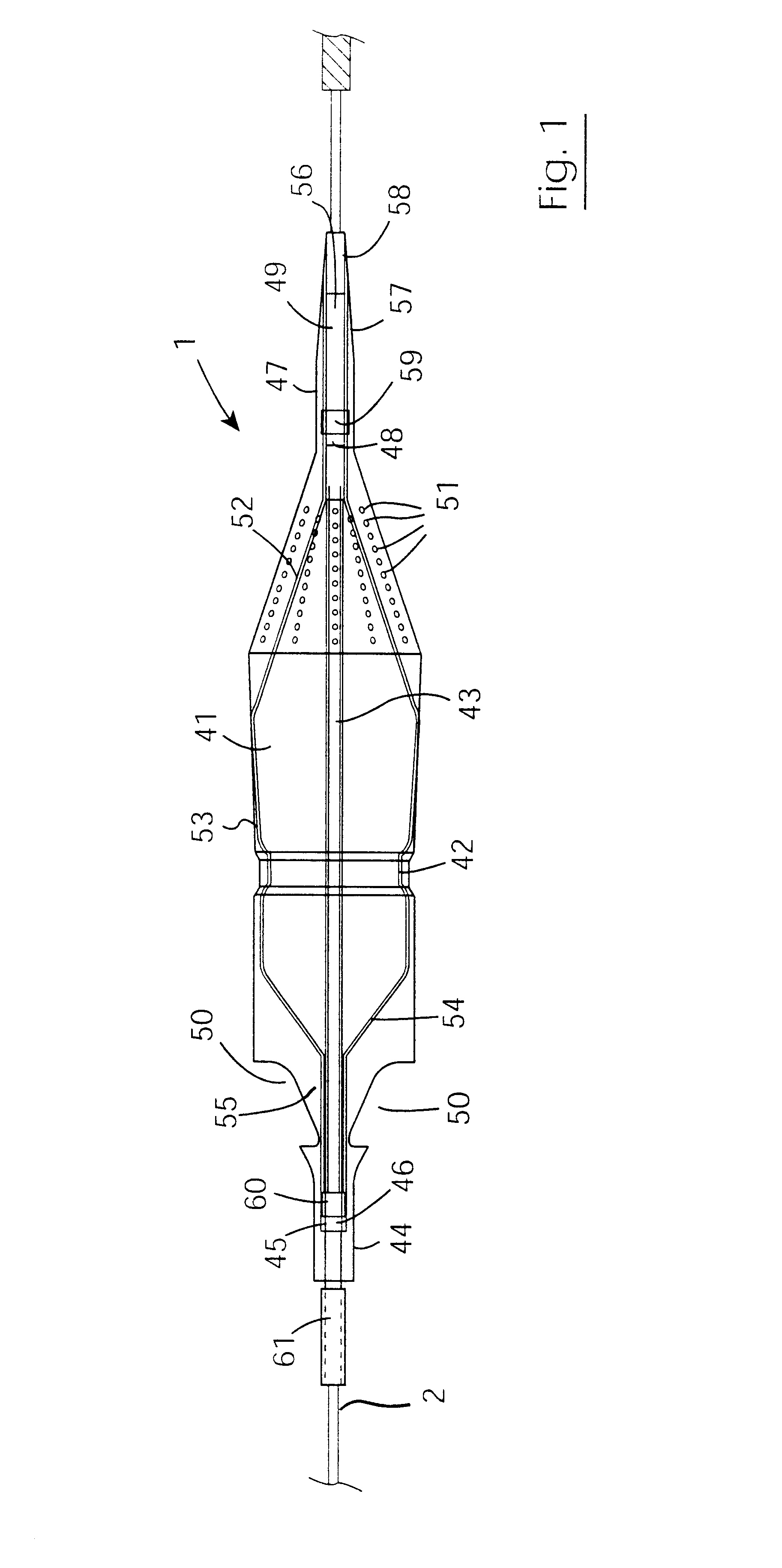Medical device
a technology of embolic protection device and filter element, which is applied in the field of medical devices to achieve the effects of reducing the thickness of the membrane, and facilitating the flow of fluids
- Summary
- Abstract
- Description
- Claims
- Application Information
AI Technical Summary
Benefits of technology
Problems solved by technology
Method used
Image
Examples
Embodiment Construction
An extrusion grade PET with a starting tensile strength of 12,000 psi is extruded into a tube. The tubing OD was approximately 0.95 mm. The tube is cut into lengths of greater than 75 mm.
A stretch blow mould was machined from brass. The mould had a neck ID was 0.98 mm. The maximum body dimension of the mould was 4.20 mm. The length of the mould was 13.8 mm. The mould contained a circumferential groove in its mod section. The shape of the mould was consistent with the shape of the membrane blank 90 of FIG. 7.
The mould was mounted onto a stretch blow-moulding machine. The mould is heated in a controlled fashion. The tubing is placed inside the mould with its end projecting out either side of the mould. The ends of the tubing were gripped while maintaining the ability to pressurise the tube lumen pneumatically.
When the tubing reached an equilibrium temperature with the mould the tubing was stretched in the axial direction. Inflation of the lumen stretched the filter in the circumferent...
PUM
 Login to View More
Login to View More Abstract
Description
Claims
Application Information
 Login to View More
Login to View More - R&D
- Intellectual Property
- Life Sciences
- Materials
- Tech Scout
- Unparalleled Data Quality
- Higher Quality Content
- 60% Fewer Hallucinations
Browse by: Latest US Patents, China's latest patents, Technical Efficacy Thesaurus, Application Domain, Technology Topic, Popular Technical Reports.
© 2025 PatSnap. All rights reserved.Legal|Privacy policy|Modern Slavery Act Transparency Statement|Sitemap|About US| Contact US: help@patsnap.com



